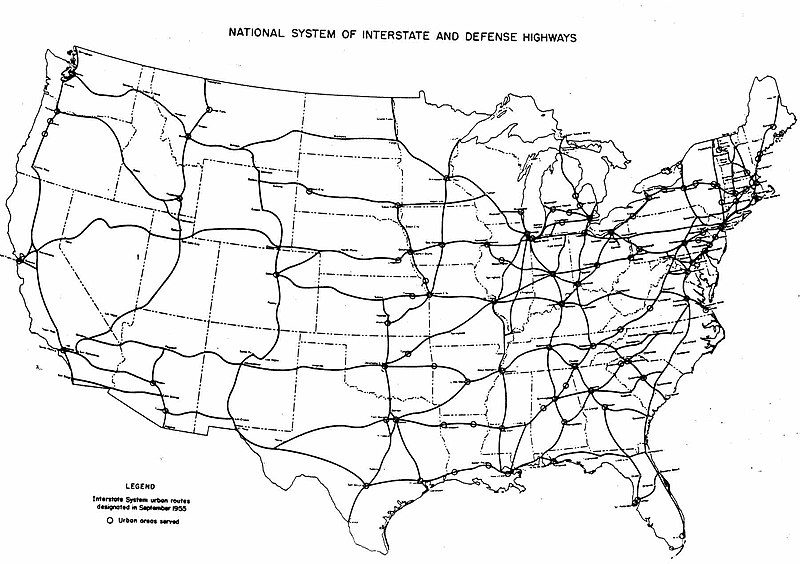A few days ago, Cap’n Transit had a great post up on Paris’ RER commuter rail system, specifically how the system was designed and planned to not only address current transportation needs, but also accommodate future growth:
As I wrote in earlier posts, Paris’s Regional Express Network (RER) of commuter/rapid trains was not simply designed to make connections, but to accomplish specific development goals. The same 1965 SDAURP (Master Plan for the Urban Development of the Paris Region) that laid out the RER also planned the development of the five “new towns” around the region and the suburban campuses of the University of Paris. Anticipating a new wave of residents who would study and work in the area, regional planners under the direction of Paul Delouvrier, the General Delegate to the District of the Paris Region, designed these train lines to connect residential developments with universities and job centers. They also aimed to relieve congestion on certain metro lines that were overloaded, particularly the 1 and 4 lines, the main east-west and north-south lines in the system.
I’ve commented previously on the (potential) similarities between DC and Paris – (Polycentricity and Commuter Rail). The opportunities for through-running service on various commuter rail routes, as well as focusing these lines on various employment nodes across the region (Alexandria, Crystal City, Silver Spring, New Carrolton, and of course, downtown). Now, whether this is the result of active planning is up for debate, as most of those centers have existed for years. Even if it’s just a happy accident, those centers have grown and great deal and retain potential for future growth as well.
The key point with these ideas for commuter rail systems is that they involve commuter rail, not urban rapid transit. Granted, DC’s Metro attempts to kill two birds with one stone. To some extent, so does Paris’s RER, though in the other direction – commuter rail that trends towards transit, rather than transit that trends towards commuter rail.
For urban rapid tranist, however, polycentricity alone isn’t enough. More investment in the core is required.
The challenge, however, is funding. As I noted in Minneapolis’ plans, the option for the Southwest Light Rail corridor that would involve the most investment in the core will likely be eliminated due to the higher cost. Mostly, this is due to the FTA’s emphasis on cost-effectiveness – and how they define both costs and effectiveness.
Yonah addresses the FTA’s issues. Despite the fact that the CEI is dictating some major decisions in Minneapolis, Yonah shows that it doesn’t even matter in terms of receiving Federal funds:
The results are inexplicable. There is no clear correlation between federal government responsibility and total cost or ridership per mile, or even cost effectiveness. What appears to be happening is that representatives from states and cities go to Washington and hope to get the best deal, and then the FTA makes a financing decision that has nothing to do with relative merit. In terms of per person benefits, the construction of New York’s Second Avenue Subway may be more important than that of any other transit line in the country. Yet the corridor only has a 27% commitment from the FTA; on the other hand, the short extension of Atlanta’s MARTA finished earlier in this decade got a 2/3 sponsorship. Why? Similarly, based on the numbers above, the San Juan Tren Urbano and the Chicago Douglas Line Renovation would cost the same to build per rider-mile, yet the feds allocated 25% of the price to the first and 66% to the second.
The problem with this system is that it makes it very difficult for cities to accurately predict how much money they’ll have to raise from local sources, and long-term plans are as a result often inaccurate. A system such as India’s, simplistic as it might be, at least would make clear that if Houston wanted to build a $2 billion rail line, it would simply need to raise $1 billion — and then the federal government would fill in the rest.
That, after all, is roughly how the Interstate System was built. Congress authorized about 50,000 miles to be built, and when a state got around to building a section, the Federal Highway Administration would simply distribute 90% of the necessary funds — no matter how complicated or “wasteful” the project’s specifics turned out to be.
Of course, with the funding formula for the Interstate highways, there was a great incentive for states to plan the biggest and most expensive freeway projects they could (often in urban areas). Apply that same mindset to Minneapolis’ Southwest corridor or a New Blue line in DC, and you’ve got a positively reinforcing mechanism – instead of putting the most expensive highways where they’re lease effective, you put the most expensive transit systems where they can be most effective.
Such a set and defined set of plans would also allow for effective long-range planning. One of the amazing things about DC’s Metro has been envisioning a whole system, and then executing it – rather than trying to have a go at it piecemeal. And that kind of certainty and planning would enable better regional planning – not to mention the raw ability of infrastructure to attract and shape the form and location of development.

